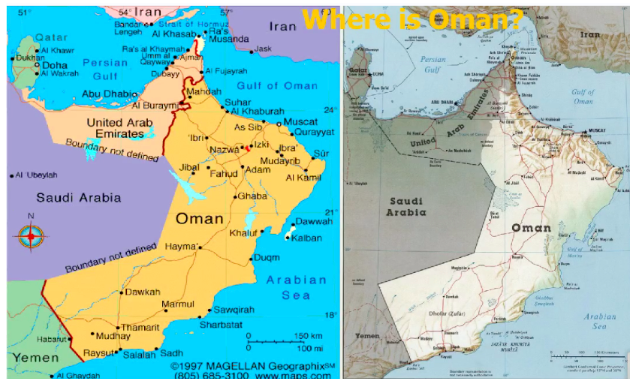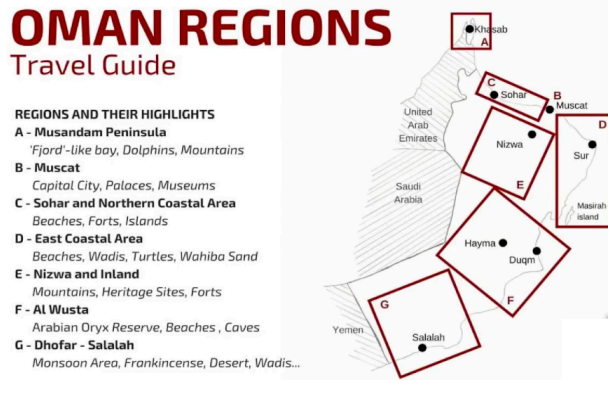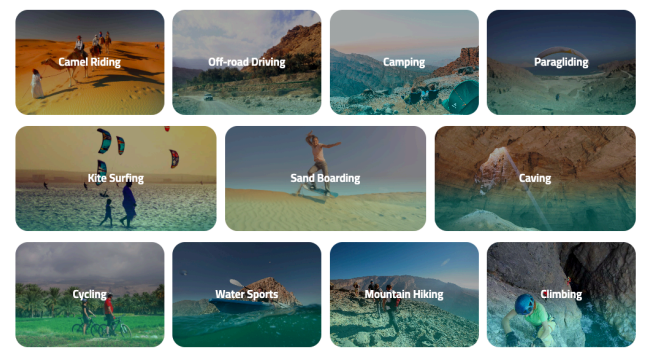Oman - Beauty has an address 
The Sultanate of Oman is considered a hidden jewel at the tip of the Arabian Peninsula.Oman is a wonderful combination of ageless heritage and modern life. A place where one can explore a traditional souq in the morning, and attend a world-class show at the renowned Royal Opera House Muscat in the evening.A large part of the Sultanate’s unique charm is the hospitality of the Omani people. It is common for visitors to be invited for Omani coffee and dates by locals when travelling through the country, an offer that should never be refused.Visitors and adventurers looking for a unique holiday experience will find that Oman has a lot to offer. Hiking, scuba diving, fishing, kitesurfing and caving to name just a few. From tall mountains and deep gorges, to water-filled wadis, endless beaches and some of the world’s most stunning desert landscapes, the diverse beauty of Oman is apparent in every part of the country.Even when summer temperatures soar in the rest of the region, the Sultanate enjoys cooler temperatures in Dhofar and the mountain tops of the Al Hajar range, making it a one-of-a-kind holiday destination for visitors from around the world
Where is Oman?

The Sultanate shares its borders with UAE, Saudi Arabia and Yemen. There are five land-based border crossings. These are: Alwajajah – the border with the Emirate of Dubai in the United Arab Emirates (UAE); Wadi Al Jizi – the border with the Emirate of Abu Dhabi and Al Ain in the UAE; Hafit – another border with the Emirate of Abu Dhabi (Al Ain) in the UAE; Khatmat Milaha – the border with the Emirate of Sharjah in the UAE; Tibat – the border with the Emirate of Ras Al Khaimah in the UAE


Geography & Climate
The Sultanate of Oman is the only country in the world composed mostly of oceanic crust and rocks that originate from the Earth’s mantle. Evidence of continental drift can be witnessed in many of the unusual rock formations and topography around Oman, including the coastline around Muscat
Best Time to Visit
The best time to visit Oman is between October and April, when the temperatures are warm (17°C to 35°C) yet not too hot. The country has a reliably warm climate, so as long as you avoid the scorching summer months between June and August, you can visit any time
High Season: October to April
Best for outdoor events and festivals
High season in Oman coincides with pleasant temperatures ranging from about 15°C (60°F) to 30°C (85°F). These months see little to no rainfall, making it an ideal time for enjoying outdoor events and festivals, such as the Muscat Festival in January
Shoulder Season: April to May
Best for budget travelers
The weather warms up to excruciatingly hot during shoulder season, but lower visitor numbers mean more affordable accommodations and tours.
Low Season: June to September
Best for indoor activities and turtle watching
Oman’s summer months are an insufferably hot time to visit, unless you’re heading to Salalah in the Dhofar region. There, the khareef (rainy season) brings much cooler temperatures as the rest of the country swelters. The hot temperatures drive visitors indoors to museums and other cultural institutions.
What to Wear: Since Oman is a Muslim country, you’ll want to be more covered up, especially when visiting any religious sites. Pack some longer dresses, scarves and sleeved tops to cover your shoulders. You can find more detailed packing tips at the bottom of this post!
Language: Arabic is the official language of Oman, but English is widely spoken. It’s the unofficial second language, so you’ll find it relatively easy to communicate with locals without too much trouble.
Things to do:
Oman is the land of adventures, starting from exploring the Hoota Cave, going through the experience of zip-lining in Musandam Governorate, as well as hiking on mountain trails in the Riam Walkway or through metal wires in Wadi Bani Auf. Also, diving into the depths of the ocean to enjoy seeing colorful coral reefs and rare fish in the Daymaniyat Islands, sailing in kayaks, sailboats, and jet skis, to camping under the star-studded sky in the sands of the East. All of this confirms a truly memorable visit, encompassing adventure in every sense of the word. The diverse landscapes of the country and the varied tourism patterns it offers contribute to making your visit to Oman truly meaningful and unique

Traditional markets in Oman offer a distinct shopping experience with an authentic Omani touch. These markets showcase a diverse range of Omani products, including frankincense, traditional clothing, and handmade crafts. These markets are scattered throughout various cities. For instance, Muttrah Souq is located on the waterfront in Muttrah Governorate and displays a wide array of products such as clothing, silverware, spices, frankincense, and other Omani goods. Nizwa Souq is situated near the famous Nizwa Fort, and visiting the souq on Friday mornings provides an opportunity to witness the traditional method of selling livestock known as “Al-Mnadha” or auction







Option II: 06 Nights
Day 01: Arrival Muscat
Arrive & transfer to hotel. Overnight at Muscat Hotel.
Day 02: Muscat
City Tour, shopping. Overnight at Muscat Hotel


Day 03: Muscat
An unexpected must-do in Muscat is to take a Day Trip to the incredible white sand beaches and brilliant aqua waters of the Daymaniyat Islands. Book a tour and enjoy a day at sea in the Gulf of Oman - it will be one of the highlights of your trip! Touring and snorkeling the Daymaniyat Islands are one of the most surprising and must-do parts of a trip to Muscat, Oman.


Day 04: Muscat
Day Trip to the Bimmah Sinkhole and Wadi Al Arbeieen
Start the morning at Wadi Al Arbeieen. This is a valley located in the northern region of Oman and it’s known for its rugged terrain and scenic beauty, making it popular among hikers and outdoor enthusiasts. The Bimmah Sinkhole is a natural attraction located on the north-eastern coast of Oman about an hour and a half south of Muscat. It’s a popular destination for tourists and locals due to its unique and picturesque setting. Overnight stay in Muscat


Day 05: Muscat - Wahiba Sands Desert
Visit Wadi Shab and Sur En Route to the Wahiba Sands Desert Wadi Shab definitely can’t be missed on your Oman road trip. It is basically a narrow gorge that runs through the mountains and features crystal clear pools, waterfalls, and natural caves where people go to swim and camp. Sur is located along the coast of the Gulf of Oman, Sur is a charming coastal town that’s only 1 hour and 20 minutes south from Wadi Shab, it’s a great place to explore another side to Oman. Before sunset, make the drive to Bidiyah, which is the
launching point into the Wahiba Sands Desert. Overnight stay in Wahiba Sands Desert



Day 06: Wahiba Sands - Nizwa - Jebel Shams - Jebel Akhdar
Proceed to Nizwa, capital of the interior, is the birthplace of Islam in the Sultanate of Oman. Nizwa boasts of the famous Round Tower Fort (photo stop), built in the 17th century, and its Souq renowned for its Friday cattle auction, intricately hand-carved “Khanjars” (daggers) & ornamental silver jewellery. We proceed to Wadi Al Madeen where there is a check post. From here a 36 km stretch of winding road takes one to Jebel Akhdar (2000 mts above sea level) the green jewel of the Al Hajjar mountain ranges, a truly unique spot in the Arabian Peninsula. Enjoy the cool climate up in the mountains. Overnight stay in Jebel Akhdar



Day 07: Jebel Akhdar - Muscat - India
Transfer to airport to board flight for India
Copyright © 2024 Nomads Holidays. All Rights Reserved.
